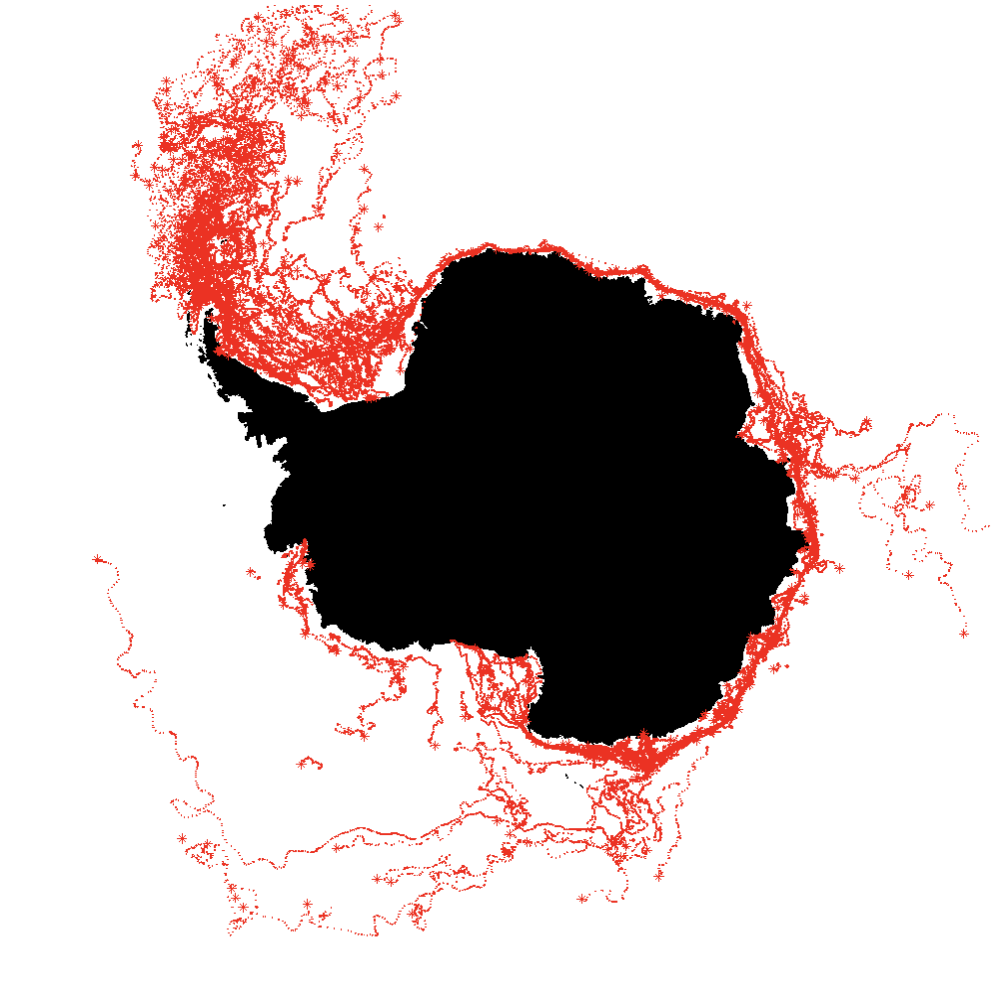Iceberg A68a — currently the world’s largest iceberg — is rotating and possibly moving in a westerly direction away from South Georgia Island, according to new satellite photos. This is potentially good news, as the enormous chunk of ice appeared to be on a collision course with the wildlife-filled island.
A series of photos captured by the Copernicus Sentinel-1 mission show iceberg A68a’s movements from November 15 to 25. The iceberg, which calved from Antarctica’s Larsen C ice shelf in July 2017, is now 255 km from South Georgia Island, according to the European Space Agency (ESA).

The iceberg, which is hilariously shaped like a pointing finger, appears to be “rotating and potentially drifting westwards” away from the island, according to the ESA. Importantly, this is no guarantee, however, that the fickle currents in the South Ocean won’t redirect A68a back towards South Georgia, but hey, we could all use some good news right now.
[referenced id=”1526799″ url=”https://gizmodo.com.au/2020/11/worlds-biggest-iceberg-is-on-a-collision-course-with-wildlife-filled-island/” thumb=”https://gizmodo.com.au/wp-content/uploads/2020/11/06/smtgakqgwypjjc3olbau-300×168.jpg” title=”World’s Biggest Iceberg Is on a Collision Course With Wildlife-Filled Island” excerpt=”The world’s biggest iceberg — called A68a — is heading directly towards the sub-Antarctic island of South Georgia, where it could wreak havoc on the local wildlife for years to come.”]
Several weeks ago, A68a was several hundred miles southwest of the island, prompting concerns of a potential collision.

Indeed, such a scenario would not be ideal for the many animals living on or near the island. Iceberg A68a is currently the world’s largest iceberg at 4,850 square km, but it’s actually quite shallow, measuring around 200 metres deep. Should A68a get close to South Georgia, the iceberg would likely clear the shallow seafloor around the island and come to rest along the shore.
Should a collision happen, the iceberg — which is larger than Rhode Island — would wreak havoc on the local wildlife. The gigantic block of ice would potentially block the foraging routes of penguins and seals and disrupt their breeding patterns. The iceberg would also smother the seafloor, crushing animals and plants on the bottom. A grounded iceberg of this size could linger for upwards of 10 years, according to officials with the British Antarctic Survey.
Fingers are crossed that we’re seeing a trend here, as A68a starts to move west, and hopefully northwards, where it would eventually melt in the warmer waters. But as history shows (check out the graphic above, showing iceberg movements around Antarctica from 1999 to 2010) , icebergs in this part of the world tend to have a mind of their own.
South Georgia island isn’t in the clear just yet.
